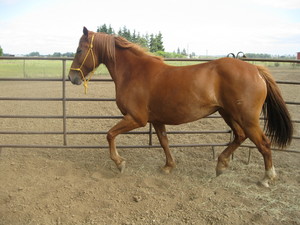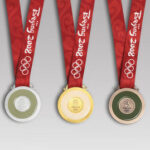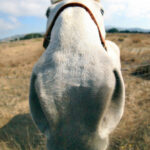Building the perfect outdoor arena can be challenge. Not only do you have to worry about footing, but you also have to consider the angle of the arena, drainage, size, location, maintenance and more. Building an arena can get confusing pretty quickly if you’re not well informed.
There are many factors to consider when planning your outdoor arena. First, you’ll want to decide how big you want your arena. Size will depend on your budget and discipline. Do you want a 60 by 40 meter dressage arena or a 120′ by 200′ jumping or gaming ring? If you’re on a budget, it’s best to keep the arena dimensions smaller. The bigger the arena, the bigger the cost. It’s important that if you’re on a budget that you don’t go for a bigger size and then try to compensate by cutting corners. Cutting corners when building an arena will only lead to trouble. You’ll end up needing to make more repairs down the line and maintenance will be more difficult, which means you’ll end up investing more money and trouble anyways.
The next thing to consider is the footing. There are lots of different types of footing including hogsfuel, woodchips, shredded rubber and the most commonly used – sand. All of these have benefits as well as drawbacks. Rubber footing is great because it doesn’t get dusty so it requires no watering, and since it’s man-made material it won’t break down over time. Unfortunately if you live in a hot climate it can heat up quite a bit during the hot hours of day and may be unusable until it cools off. This is why it’s not ideal for outdoor arenas, but is for covered ones. It’s also on the expensive side. For a 60′ by 100′ arena it can cost up to $3000 for a 2 inch covering.
If that sounds too expensive for you, you may look into a cheaper footing such as sand, woodchips, or a blend. Sand is relatively inexpensive and provides excellent cushioning. However sand gets very dusty and must be watered routinely. Some people like use sand plus an additive in their arena. Sometimes they’ll add shredded fabric, woodchips, hogsfuel or shredded rubber. All of things will help cut down on dust and improve traction and cushioning for the horse.
The depth of your arena on average should be between 2 and 3 inches deep. Lean towards a deeper amount if you will be doing heavy work such as reining where your horse will really slide down into the sand. If you’re just doing light riding, you will not have to go quite as deep. Be careful not make your footing too deep or too thin. If it’s too deep, it’s easy for your horse to strain a tendon, and it if’s too thin, the footing won’t offer enough support and cushioning and your horse could injure himself.
Now that you’ve chosen a footing, you must think about how you’ll control the dust. Most sand-based arenas with light to medium use need to be watered every other day. Heavy traffic arenas usually need daily watering. Some people will create built-in sprinkler systems to water the arena, or you can use a hose and hand-water or an above ground sprinkler attachment. Whatever you decide, you will need a way to water your arena.
You’ll also need to be aware of the maintenance of keeping an arena. This will include dragging and working the footing with a tractor or ATV attachment multiple times a week. You will also need to make fencing repairs and add more footing from time to time. Because of this, it’s important that your arena is in an accessible location so that trucks and tractors can enter it easily.
The most important thing your arena will need is a good base. This can also end up being the most costly part. You absolutely cannot skimp on the base. If you attempt to build an arena and skimp on the base, I can almost guarantee you that you’ll have to redo the whole thing, costing you an additional thousands of dollars. A good base should start with your arena space dug down about 1 foot. Next you’ll fill it up about 6 inches with large, 3-4″ rock, followed by smaller 1/2″ to 1 1/2″ crushed rock such as limestone. You’ll next need to rent a roller to tightly compact the rock, and then cover with a woven liner. You’ll place your footing on top of your compacted base and liner.
It’s important that your base is level and even, with no low spots or dips, otherwise rain will leave you with sloshy puddles that will wear on your footing and base and create dangerous riding conditions. Sometimes it’s recommended to have the base slightly raised in the middle and lower on the sides to allow the water to drain away from your arena.
Also be sure to take fencing into consideration. If you’re going to be working green horses, or would otherwise like an enclosed space, you may opt for solid wood fencing or round pen paneling. If you’d like a dressage style arena, you may want to have a small rail off the ground just to designate arena boundaries. Again, the cost of the fencing will depend greatly on the size of the arena.
Now that you’ve taken all of the variables into consideration of building an outdoor arena, you will probably notice the large cost. Don’t be surprised if your arena ends up costing you over $10,000. If you find yourself out of your budget, regroup and rethink the size of your arena. The average arena will cost between $5,000 and $15,000 depending on size, footing, fencing and other specifications. Costs will also vary dramatically by location. In some areas sand may be quite literally dirt cheap. In other areas it may be hard to get and cost you double what it would cost elsewhere.




